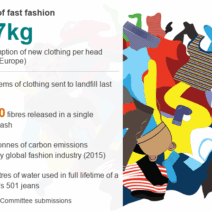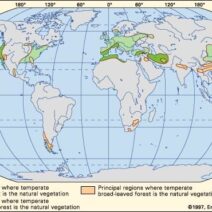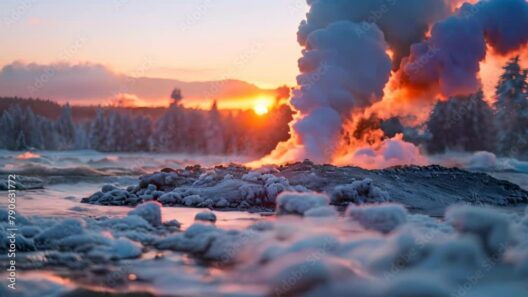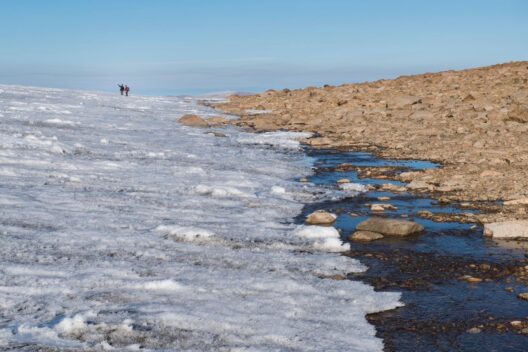The climate of Earth is an intricate tapestry woven from a multitude of factors that govern the weather patterns we experience daily. Understanding this tapestry requires a thorough exploration of the Earth’s climate systems, their interrelations, and the vast array of phenomena they produce. This article will delve deep into various aspects of Earth’s climate, elucidating the mechanisms that sustain it and the potential repercussions of human activity on this delicate equilibrium.
Climate, in its essence, refers to the long-term patterns and averages of weather conditions in a specific region. While weather can change from hour to hour, climate represents the statistical aggregation of weather over extended periods, typically decades or longer. When discussing Earth’s climate, it is imperative to recognize the distinction between weather and climate, as this differentiation lays the foundation for comprehending atmospheric behaviors.
At the core of Earth’s climate are the principal climate zones, determined primarily by latitude, altitude, and proximity to large bodies of water. These zones include tropical, arid, temperate, polar, and highland climates. Each zone demonstrates unique characteristics:
- Tropical Climates: Situated near the equator, these areas experience persistent warmth and abundant precipitation. Rainforests, such as the Amazon, thrive in this climate, showcasing a biodiverse ecosystem.
- Arid Climates: Known for their minimal precipitation, arid regions, including deserts like the Sahara, can experience extreme temperature variations between day and night. Such environments support specialized flora and fauna adapted to aridity.
- Temperate Climates: These regions experience distinct seasons, characterized by moderate temperatures and rainfall. The Mediterranean and continental climates are prime examples, offering fertile land and diverse ecosystems.
- Polar Climates: Located at the poles, these regions are notable for their extreme cold, long winters, and short summers. The tundra ecosystem presents unique challenges to both flora and fauna.
- Highland Climates: Found in mountainous areas, highland climates vary significantly with altitude, leading to diverse microclimates often found in close proximity to each other.
The interaction between these diverse climate zones is mediated through atmospheric circulation patterns, namely the Hadley, Ferrel, and polar cells. These circulation mechanisms distribute heat from the equator towards the poles, influencing temperature and precipitation patterns. The Coriolis effect, resulting from Earth’s rotation, further modifies wind direction and ocean currents, playing a pivotal role in weather systems.
A critical understanding of climate dynamics would be incomplete without discussing the greenhouse effect. This phenomenon occurs when certain gases in Earth’s atmosphere—namely carbon dioxide, methane, and nitrous oxide—trap heat radiating from the surface. While the greenhouse effect is essential for keeping our planet hospitable, human activities, particularly fossil fuel combustion and deforestation, have significantly amplified these gas concentrations, leading to global warming. This anthropogenic alteration has far-reaching implications, including escalating sea levels, increasing frequency of extreme weather events, and altering natural habitats.
Moreover, climate change manifests in various intricate patterns, such as shifting precipitation regimes and altered wind patterns. Regions that once enjoyed predictable rainfall may experience severe droughts or torrential downpours. These changes disrupt agricultural practices, jeopardizing food security and livelihoods globally. Furthermore, the shifting climate can precipitate the migration of species, pushing them toward new habitats that may not support their survival, thereby exacerbating biodiversity loss.
One cannot overlook the impact of climate on severe weather phenomena. Hurricanes, tornadoes, and monsoons are exacerbated by changing climatic conditions. Warmer ocean temperatures fuel more powerful hurricanes, while altered atmospheric conditions can intensify tornado formation. Additionally, severe flooding resulting from increased rainfall can devastate communities and ecosystems alike.
As we delve deeper into climate science, we must also consider the implications for regional and global politics. Climate change remains a pressing issue necessitating international cooperation. Governance structures such as the Paris Agreement represent attempts at fostering collective action to mitigate climate change impacts. However, disparities in resources and political will between nations often complicate these collaborative efforts. Developing countries, typically the least responsible for greenhouse gas emissions, often bear the brunt of climate-related disasters, sparking ethical considerations and discussions about climate justice.
Looking towards the future, it is imperative that we adopt sustainable practices to mitigate the adverse impacts of climate change. Transitioning to renewable energy sources, enhancing energy efficiency, and promoting conservation efforts are critical steps individuals and communities can undertake. Education plays a vital role in this transformative process, as awareness can lead to more informed decisions and collective action.
In conclusion, Earth’s climate is a complex and interdependent system, characterized by various zones, atmospheric dynamics, and human influences. Understanding the intricacies of our planet’s weather patterns is essential for navigating the challenges posed by climate change. Action at both individual and collective levels is crucial to ensuring a sustainable future, safeguarding ecosystems, and protecting vulnerable communities. By fostering a greater understanding of these issues, we can cultivate a more resilient planet for generations to come.







